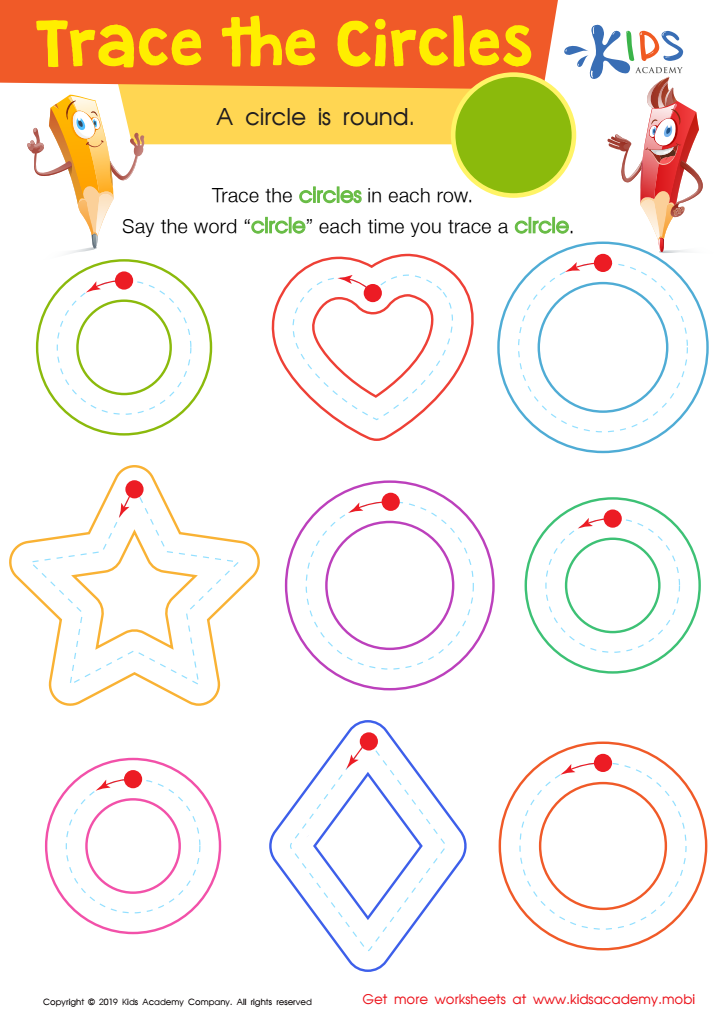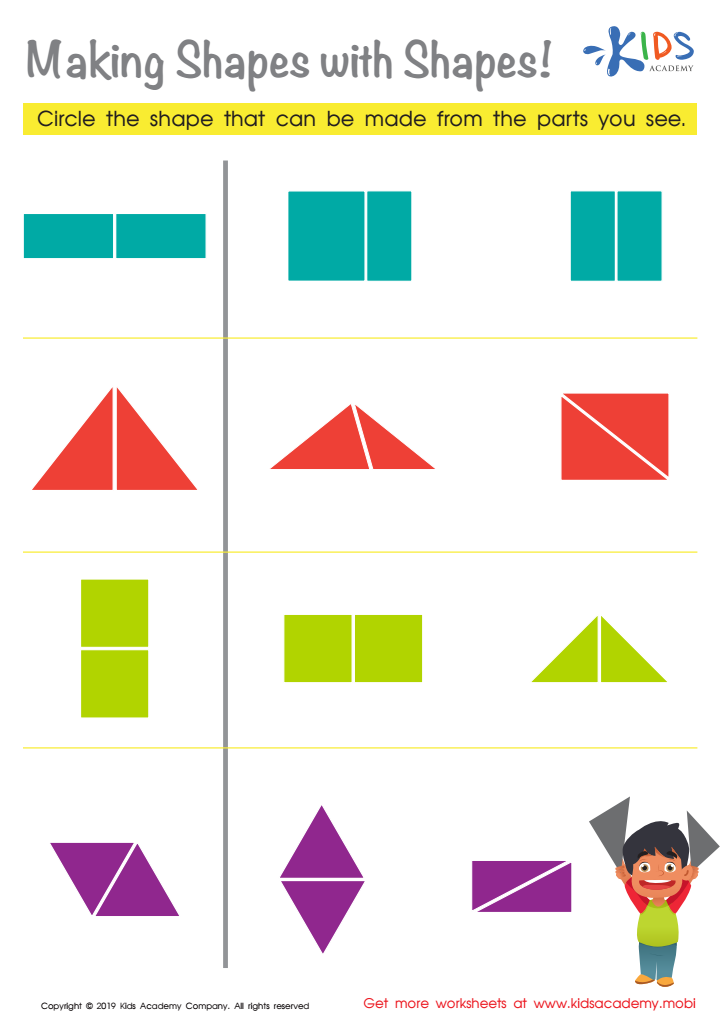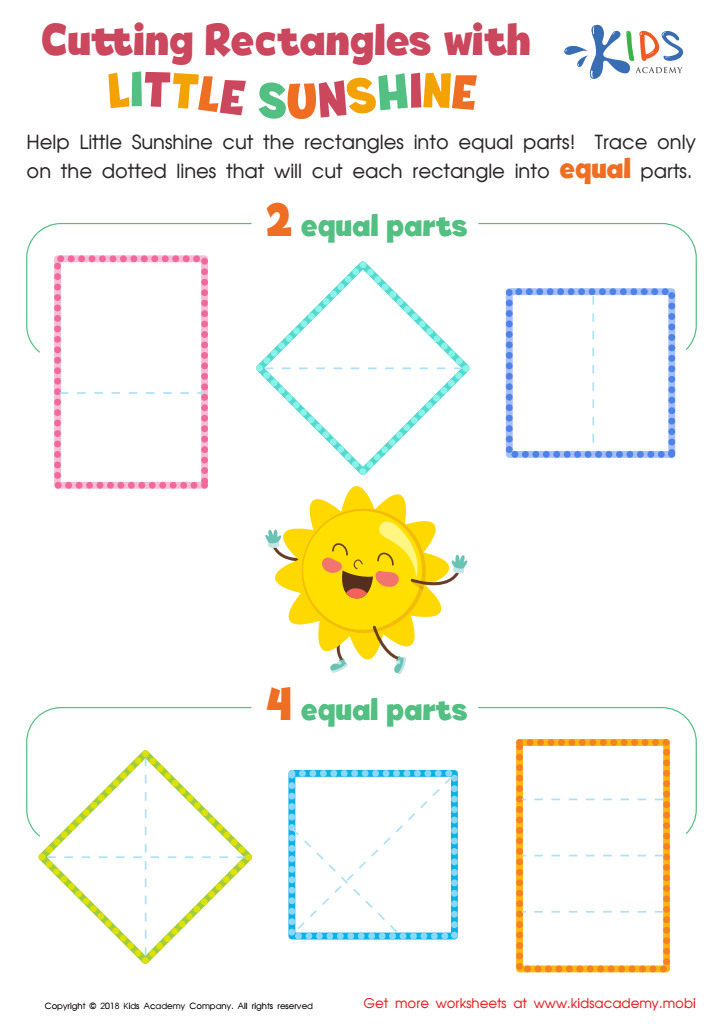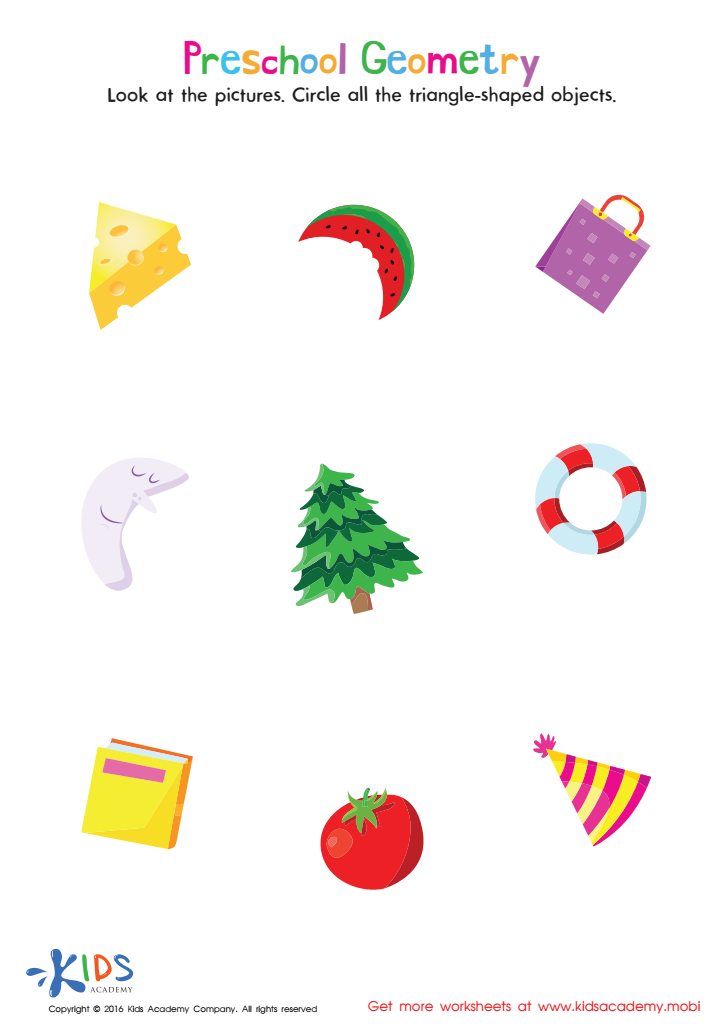Hand-eye Coordination Geometry Worksheets for Ages 3-6
5 filtered results
-
From - To
Boost your child's hand-eye coordination with our engaging Geometry Worksheets designed for ages 3-6. These carefully crafted activities blend fun with learning, featuring colorful visuals and interactive exercises that help young learners develop essential spatial awareness and fine motor skills. Designed to introduce basic geometric shapes and concepts, our worksheets promote active participation while enhancing coordination through tracing, matching, and coloring activities. Ideal for preschoolers and kindergarteners, these resources foster both cognitive and physical development in an enjoyable way. Download the Hand-eye Coordination Geometry Worksheets today and watch your child's understanding of shapes and coordination flourish!


Trace The Circles Worksheet


Making Shapes with Shapes Worksheet


Trace and Draw More Shapes Worksheet


Cutting Rectangles with Little Sunshine Worksheet
Hand-eye coordination is a crucial skill that develops during early childhood, and its relationship with geometry is significant for children aged 3-6. This age is a pivotal time for children to explore spatial awareness, shapes, and patterns through hands-on activities that enhance their ability to coordinate visual input with physical movement.
Parents and teachers should care about this connection because effective hand-eye coordination fosters a child’s ability to manipulate objects and explore their environment. Engaging in geometric activities, such as building blocks, puzzles, and shape sorting games, encourages problem-solving skills and critical thinking. These experiences also lay the groundwork for more complex tasks later, such as writing and mathematical reasoning.
Moreover, emphasizing hand-eye coordination through geometry supports fine motor skills, which are essential for everyday tasks, and builds confidence in children's abilities. When children master hand-eye coordination in relation to geometric concepts, they develop not only cognitive skills but also fundamental principles of mathematics, like symmetry and spatial relations. Encouraging these skills at an early age ensures a comprehensive foundation for ongoing educational success and enhances overall developmental progress. In summary, it shapes both their physical and cognitive development in engaging and meaningful ways.
 Assign to My Students
Assign to My Students

















